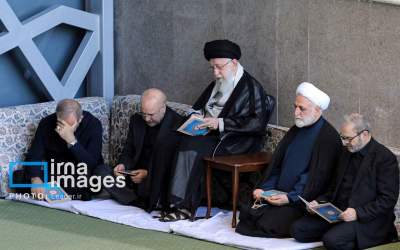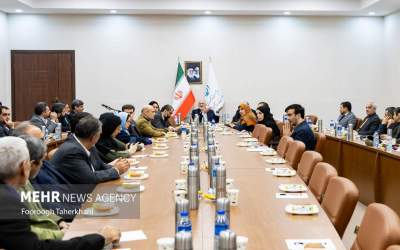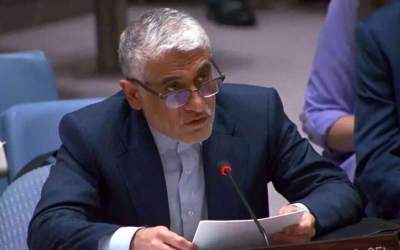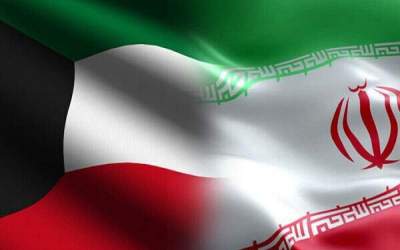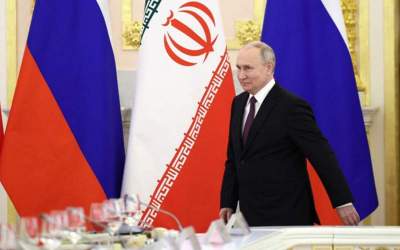Thursday 15 September 2016 - 12:30
Story Code : 231247
Russian-Iranian banking partnership aims to ditch Dollars for Rials and Rubles
Last week the Russian newspaper Izvestiya reported that Russian banks are at�the front of�the queue to�enter Iran's banking sector after�the partial lifting of�sanctions.
"Iran is emerging from�years of�sanctions, the quality of�banking services there has declined and Russian players can enter the market with�interesting products for�business and the public," Anatoliy Aksanov of�Russia's Association of�Regional Banks told Izvestiya. The newspaper reported that the two countries' central banks recently held talks on�the management of�closer financial cooperation, and ten of�Russia's largest banks are preparing financial services for�the Iranian market.
Former President of�the Russia-Iran Friendship Society Bahram Amirahmadiyan told Sputnik Persian that banking cooperation between�Russia and Iran has a long history. "This is really a very important topic, particularly in�the context of�trading and economic links between�Russia and Iran. Even under�the Shah, before�the 1979 Islamic revolution, Russian-Iranian banking cooperation was very active. There was even a joint bank which conducted trade operations," he explained.
In 1924 two bilateral institutions were set up, the Russian-Persian Commercial Bank and the Russian-Persian Trade Company. "After the 1979 that bank, along�with many other joint banks, was closed, and bilateral transactions stopped," Amirahmadiyan explained. The volume of�bilateral trade between�Russia and Iran is currently four to�five billion dollars, which is conducted using dollars or euros, and mostly through�intermediate countries such as�Cyprus or the UAE.
Russia's trade representative in�Iran Andrey Lugansky told Rossiyskaya Gazeta that following�the lifting of�sanctions, many Iranian companies conducting business through�overseas subsidiaries will return their business to�Iran and conduct their trade directly.
"We want to�carry out�all our trade operations in�our national currencies, (although) this issue has not been resolved yet," Amirahmadiyan said. "Of course, the prospect of�Russian banks opening in�Iran is very attractive and important because it can widen and improve our economic cooperation. At the moment, all banking operations between�Russia and Iran are carried out�in dollars or euros. It's very inconvenient, because all these operations are controlled either by�the EU or US central banks."
Amirahmadiyan said that the Russian ruble could also benefit from�the banks' entry to�the Iranian market, which would enable Iranian companies to�buy Russian goods in�rubles.
"I also think that the Russian ruble can strengthen a lot on�the Iranian currency market, and become a very attractive currency. There currently aren't any Russian banks in�Iran, and the Russian currency is not very well known on�the market. When Russian banks begin to�operate in�Iran, there will be more currency operations and the ruble will strengthen. I hope the same will happen to�the Iranian rial in�Russia. That's why we are waiting impatiently for�this initiative to�go ahead," Amirahmadiyan said.
A single Iranian bank currently operates in�Russia, called "Mir Business Bank." The bank is a subsidiary of�Bank Melli Iran and 70 percent of�its customers import and export goods such as�grain, timber and food products between�Russia and Iran. According to�official figures from�Russia's Federal Customs Service, Russian-Iranian trade as�a proportion of�Russia's international trade increased from�0.2 to�0.4 percent in�the first half of�this year, following�the partial lifting of�sanctions. Between January and June, the total turnover of�trade between�the two countries was $923.7 million. "Iranian businessmen and entrepreneurs often tell me that the key problem in�the way of�increasing the volume of�trade between�the two countries is the lack of�a single joint banking mechanism. This is a very valuable and rational initiative from�Russian banks, and I am sure it will succeed in�practice.
The Russian-Iranian Chamber of�Commerce is actively working on�opening a joint Russian-Iranian bank," Amirahmadiyan said. In January the US and EU announced the lifting of�all economic and financial sanctions against�the Islamic Republic associated with�its nuclear program, enabling Tehran to�access previously frozen assets, use international financial messaging services such as�SWIFT, and sell oil and other raw materials to�EU countries. While Russian firms are keen to�increase trade with�Iran, their Western counterparts still appear fearful of�repercussions from�the authorities.
In March Iran's Supreme Leader Ayatollah Ali Khamenei told Iranian television that US authorities are dragging their feet on�lifting sanctions, and that Iran's international financial transactions face problems because banks "fear the Americans." "The Americans have not acted on�their promises and (only) removed the sanctions on�paper," Khamenei said.
While they have lifted some sanctions following�the July 2015 nuclear agreement between�Tehran and the 5+1 countries, the US and EU continue to impose some sanctions against�Iran associated with�its ballistic missile program, which Tehran maintains has purely defensive purposes. In July the US House of�Representatives blocked a deal between Boeing and Iran Air�to�supply 118 passenger planes to�replace Iran's ageing fleet. The move also prevents a similar deal between�Iran Air and French manufacturer Airbus, since�its planes use some parts from�Boeing. The US representatives claimed Iran could modify the jets and use them for�military purposes.
By Sputnik
prev
next
Latest News
Most viewed

